In December 2024, the MAXXI museum in Rome hosted two exhibitions that caused much discussion: one dedicated to the 60th anniversary of Nutella, titled JOYN!, and one to the 100th anniversary of Autostrade per l’Italia, called Italia in movimento - Autostrade e futuro. However, two events included in the exhibition calendar of the Roman institution raised more than one question about the meaning and direction of public cultural policies. And that is why they were the focus of a performance conceived by artist Giulietta Gheller, entitled ANTITESIS.
The decision to host within one of the most important museum spaces dedicated to contemporary art two exhibitions that are in fact celebratory of major corporate brands - Ferrero and Autostrade - raised perplexities among artists and insiders, bringing back to the center of the debate a question that has never been resolved: what is contemporary art? And, most importantly, what are the tasks of public cultural institutions today?
Gheller recalls that, according to Article 9 of the Italian Constitution, the Republic promotes the development of culture and protects the artistic and historical heritage of the nation. It is precisely this task that, according to the artist, has been disregarded in the recent choices of MAXXI, which has been accused of turning more and more into a promotional platform rather than a critical and formative space. Instead of acting as a filter and guide to introduce the public to the complexity and richness of contemporary art, the museum has allegedly chosen the path of emotional marketing, renouncing its own cultural mission.
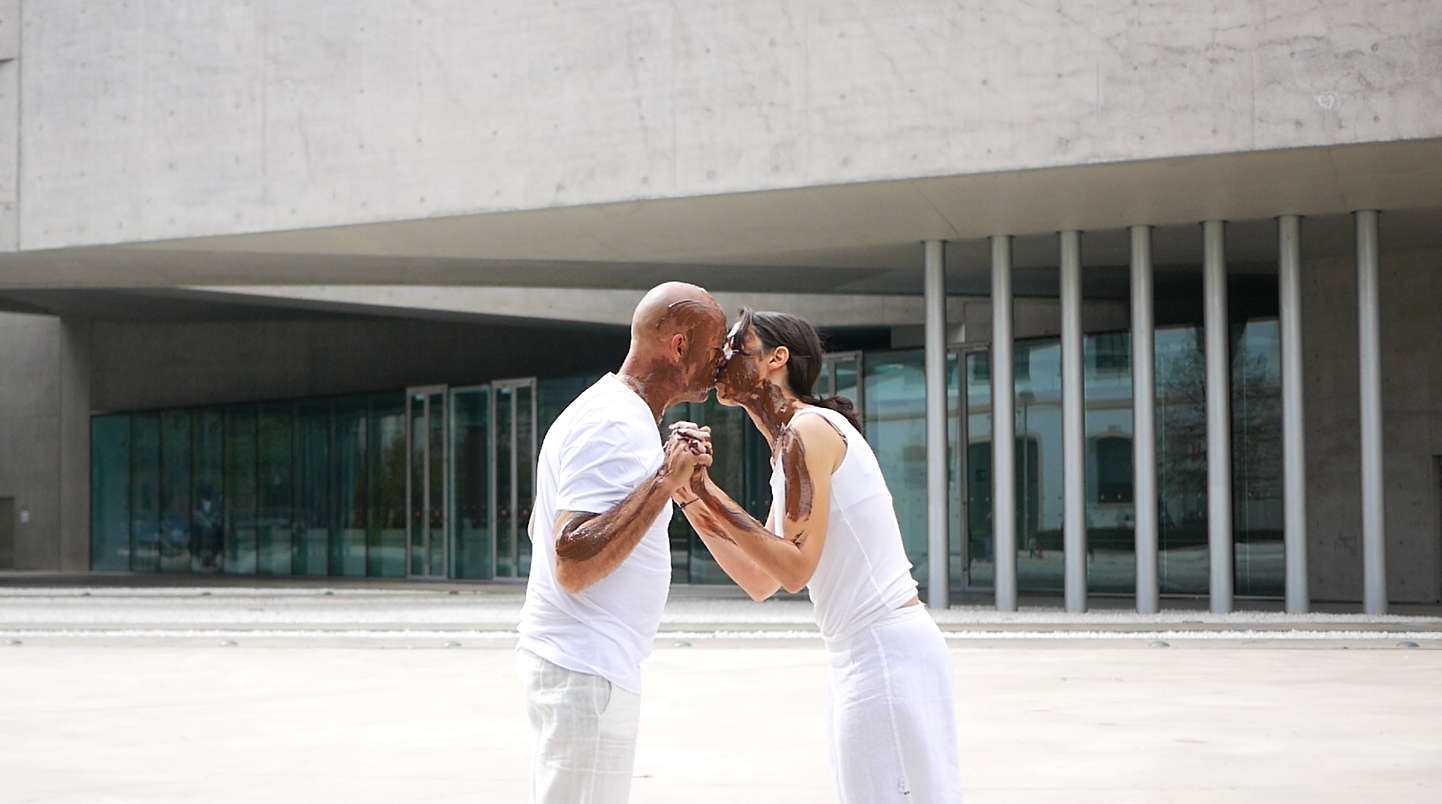
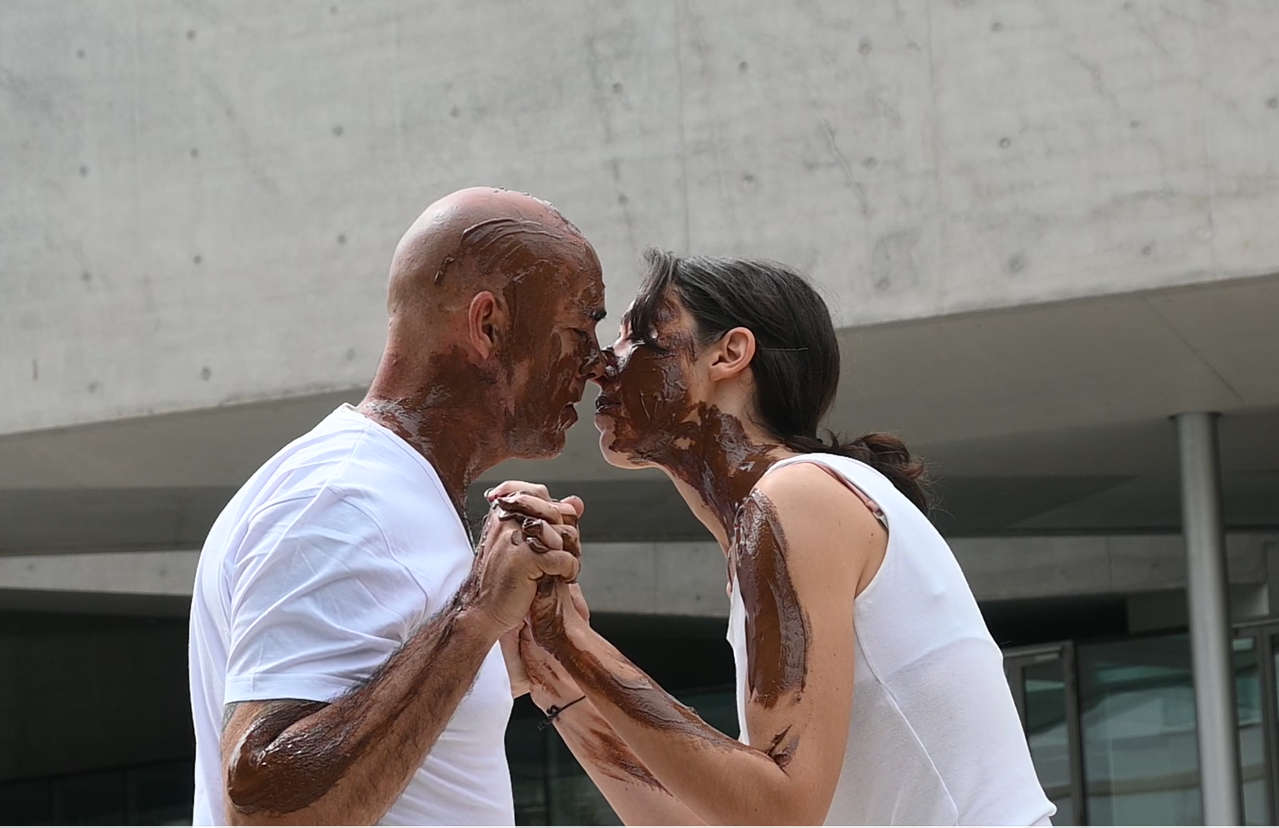
This is the context for ANTITESIS, the performance conceived and realized by artist Giulietta Gheller, who decided to respond with the language of art itself to what she calls an “anti-cultural policy.” The action took place on April 13, 2025, in the very courtyard of MAXXI. Not inside the museum, but in front of it, in a kind of symbolic and scenic reversal that is an integral part of it. The protagonists of the performance were Gheller herself and a second performer, arranged opposite each other, immersed in a choreography of extremely delicate and slowed-down gestures. Under the dreamy, melancholic notes of Claude Debussy’s Rêverie, the two sprinkled each other with Nutella, recalling the childhood game of getting dirty and eating, then transforming that contact into an abstract form of loving intimacy. The action ended with a kiss that was also symbolic, without actual physical union, but charged with poetic tension. Next to the two performers, a hand-painted picture bore a clear and unmistakable inscription, “NUTELLA, PUT IT EVERYWHERE BUT NOT AT MAXXI.” The phrase, traced in the same font typical of the Ferrero brand, was made precisely using Nutella as a pictorial medium, in a game of appropriation and refusal that underscores the strength of the antithesis from which the work takes its name.
Gheller’s work thus aimed to operate on multiple levels: a public, performative action, but also pictorial and textual. An ironic critique of how the language of marketing is, in his view, colonizing cultural spaces, replacing art’s guiding and reflective role with that of entertainment and consumerist gratification. ANTITESIS, therefore, makes use of Nutella by taking it into its own language, claiming the possibility of art to say something different, to create a contrast, to stimulate critical thinking.
“It is not enough to point to these brands as national-popular icons,” the artist observes. “If we had brought these exhibitions inside exhibition spaces of other production sectors, the violation would have seemed obvious. But here we are playing with the difficulty of defining contemporary art on the part of a public that, instead of being helped with the offer of effective keys to interpretation by precisely those institutions that should preside over and reaffirm them, is misled by them. It is acting against the specificity of art to activate a vital and necessary growth of our critical sense, to exercise an alignment of our inalienable needs as human beings and thus to decay superfetations and lies, in a society again super-exposed to fakes.”
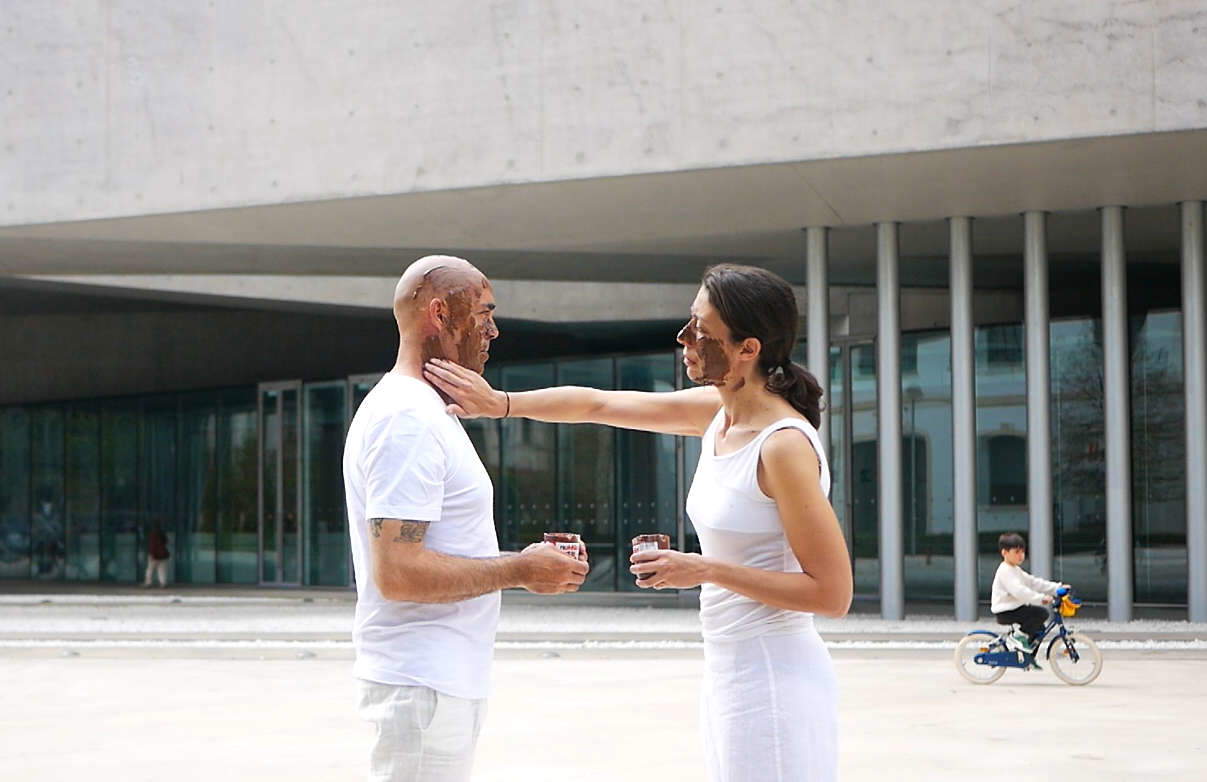
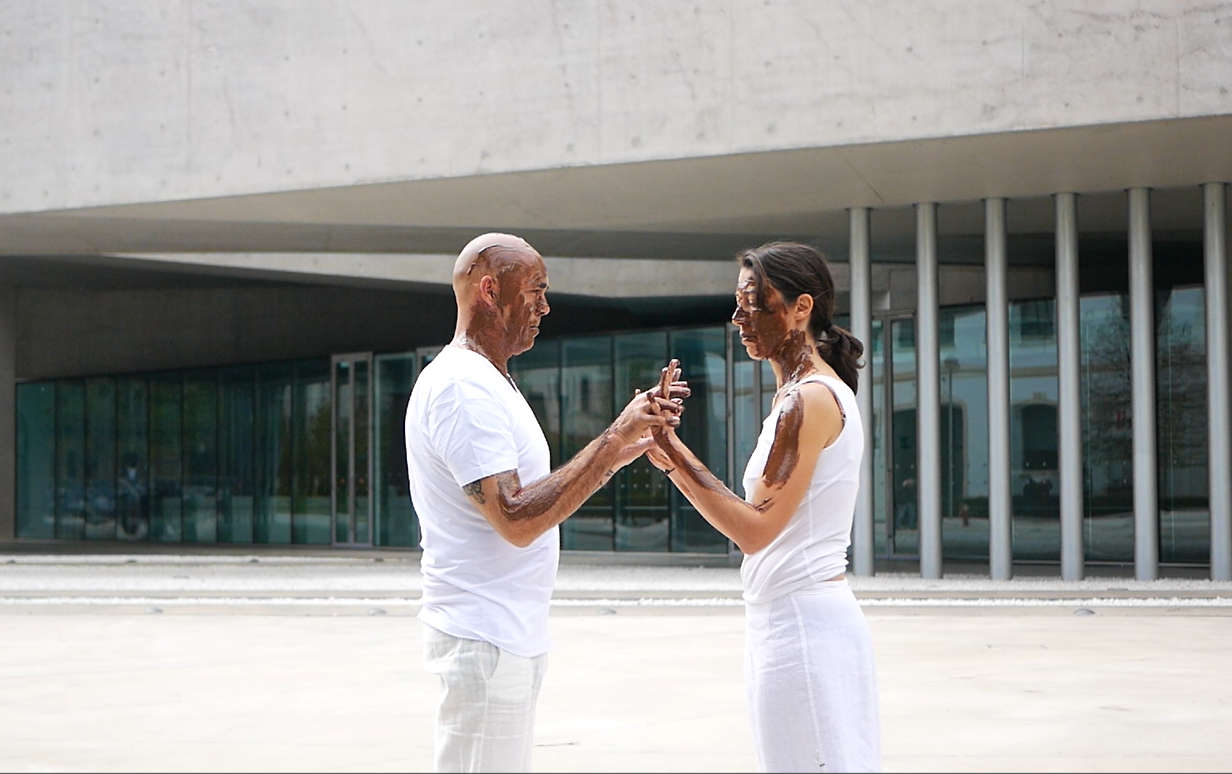
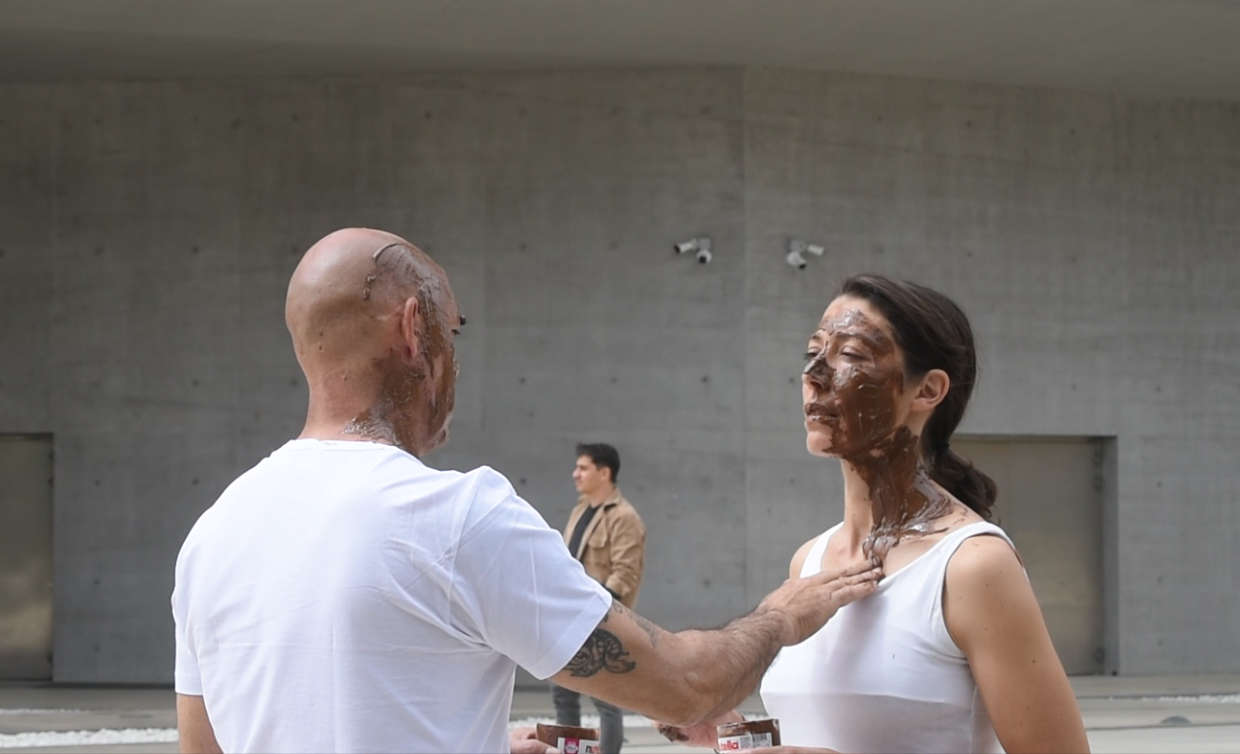
To increase the resonance of the performance, Gheller created two video versions of the action: a one-minute teaser in a vertical format designed for social media, and a longer, six-minute video in a horizontal format documenting the work in its entirety. Both videos were made available free of charge to newsrooms and cultural media outlets, with the possibility of being edited and adapted, after discussion with the artist, for dissemination.
The communication strategy is an integral part of the artistic project. The work lives in its materiality and ephemeral stage presence, but it also projects itself into the media dimension, seeking attention from the trade press, cultural and political publicity, and social channels. For Giulietta Gheller, then, it is not a provocation for its own sake, but an intervention that asks for a listening ear and raises urgent questions: what remains of art when it is emptied of its critical function? Who needs a museum that stops forming consciences and merely hosts showcase events? ANTITESIS thus wants to configure itself as a gesture that asks for a choice: not between Nutella and art, but between a culture that celebrates without questioning and a culture that gets its hands dirty to rediscover a sense of its own function.
 |
| Nutella at MAXXI: Giulietta Gheller stages performance against the commercial drift of museums |
Warning: the translation into English of the original Italian article was created using automatic tools. We undertake to review all articles, but we do not guarantee the total absence of inaccuracies in the translation due to the program. You can find the original by clicking on the ITA button. If you find any mistake,please contact us.